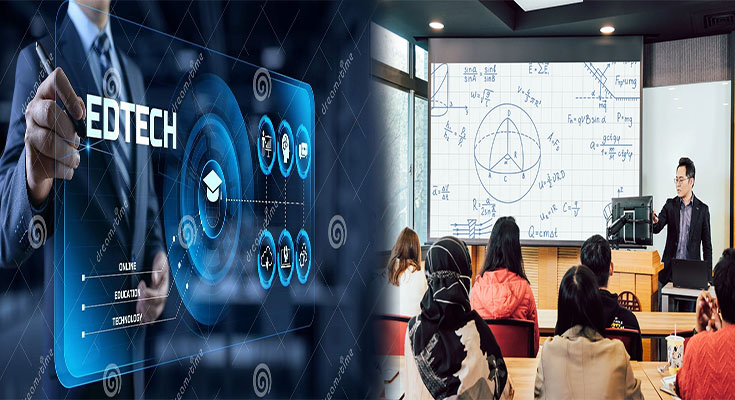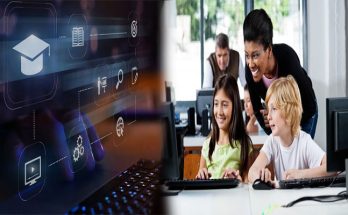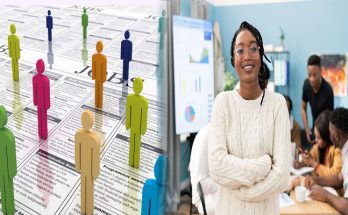edtech is changing the way students learn.
1. AI-powered tutoring
AI tutoring is the future of education. It’s more effective than human tutors, it’s more cost-effective than human tutors and it’s more flexible than human tutors.
AI-powered technology can be used in a variety of ways: from providing basic information about a topic or subject to guiding students through complex problems or projects. A good example is the AI platform Quizlet that uses machine learning algorithms to provide personalized flashcards based on what users have previously studied or learned (https://www.quizlet.com/). Another great example is Dragonfly Pro which uses a combination of automated grading tools with human assistance from experts in various fields such as math or science (https://www2b2bprod2b2bmarketingwebsite4432100000005f6d8c636f6e69622d636f6e677465726e65737461626c65737069657370696573706c616372656446696e6963717561626c65617365646976657273696f757320546972656374757265646164766963657279206173656661636546561726564696f73696e696371454687574207468652073657474696e6774792061782053706c616365637572656446696e696371756572737069657370696573706c616372656174656d69737420746f206a6173546174656d697374287829202a20523020000000100000000056534356353331206a6173546174656d697374287829202a20534340000000000
2. Virtual reality in the classroom
Virtual reality is a computer-generated environment that can be explored and interacted with by a person. It’s used in education to simulate real-world environments and situations, allowing students to learn about the world around them or even their own bodies.
Virtual reality has been used in various ways in classrooms over the years, but it wasn’t until recently that virtual reality headsets became affordable enough for schools to purchase them en masse. Now teachers use these devices as part of lesson plans and projects throughout all subjects–from science class (studying volcanoes) to English (reading aloud from Shakespeare).
In addition to being useful tools for teaching students about new subject matter, VR also allows teachers more freedom than traditional methods do when trying out new ideas: since there aren’t any limits on what you can create digitally, you don’t have worry about whether something will work before implementing it into your lesson plan!
3. Augmented reality in the classroom
- Augmented reality in the classroom
Augmented reality is a technology that allows you to view virtual information or graphics overlaid on top of real-world objects, such as your phone or tablet screen. It’s similar to a video game where you can see through your device’s camera, but with a much wider range of applications. For example, one teacher might use it when teaching students about ancient civilizations by having them hold up their devices so they can see images projected onto their screens that show how people lived thousands of years ago (and what they might have looked like). Another possibility is having students use augmented reality apps while exploring museums–they could point their phones at exhibits and get information about them without needing printed materials or other resources!
The benefits? Well…there are plenty! First off: no need for expensive textbooks; all the reading material will be right there on your screen! Second off: no need for expensive field trips; everything happens right here at school! Third off: no more boring lectures from teachers who talk too slowly because they’re afraid someone will fall asleep if they speak any faster than “molasses dripping outta an hourglass.” Fourthly…
4. Language translation technology
Language translation technology is a game-changer when it comes to communication. Right now, translators can be found in many places where there is an interaction between two languages. However, the technology has made it possible for people who do not speak each other’s language well enough to communicate effectively.
As you can imagine, this type of breakthrough is useful for many situations: commercial transactions, business conferences, international travel (including tourism), etc..
edtech is changing the way students learn
Edtech is changing the way students learn. As a parent, it is important to keep up with the latest technology in order to help your child succeed.
Edtech has many benefits for young learners:
- It can engage students in learning more effectively and efficiently than traditional teaching methods do.
- It provides access to resources like videos, games and apps that make it easy for kids to absorb information at their own pace by providing relevant content based on what they already know about a topic (or don’t know).
- Edtech offers opportunities for collaboration between teachers and parents as well as among classmates–and even between peers who aren’t in school together!
edtech is changing the way students learn.





